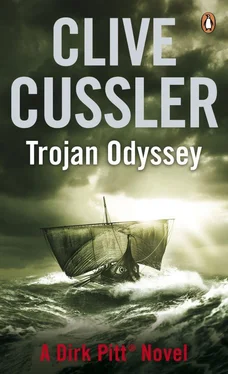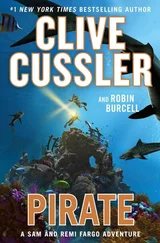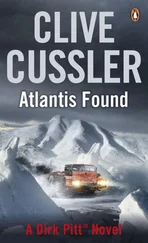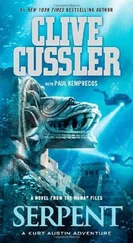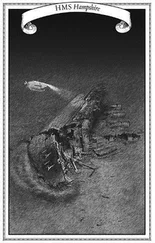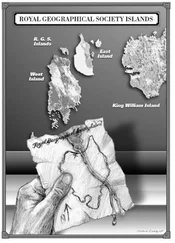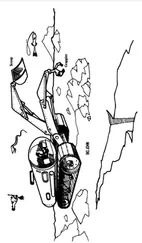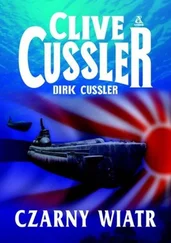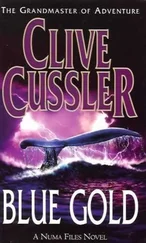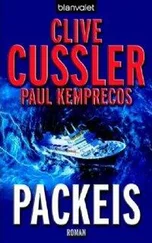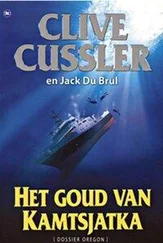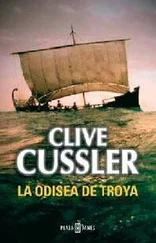While Giordino squirmed through the opening, Pitt walked around the glass-enclosed room and gazed down at a spectacular three-hundred-and-sixty-degree view of a huge lake and surrounding islands.
"Where did we come up?" asked Giordino.
Pitt turned and looked at him with a bemused expression. "You're not going to believe this, but we're at the top of a lighthouse."
"A lighthouse!" burst Sandecker at Pitt's description over his speakerphone. His voice betrayed his elation at hearing Pitt and Giordino were alive and safe.
"Yes, sir," Pitt's voice came back over his satellite phone. "Specter built it as a folly."
"A folly?"
"A structure built to look like the ruins of an ancient castle or historic structure," Gunn explained. He leaned over the speakerphone. "You're saying the lighthouse was built to hide a ventilator shaft rising from the tunnel."
"Exactly," answered Pitt.
Sandecker twisted one of his cigars. "Your story sounds fantastic."
"All true down to the last item," said Pitt.
"A tunnel-boring machine that can cut through a mile of rock a day?"
"Which explains how Specter was able to excavate four tunnels, each nearly a hundred and fifty miles in length, in four years."
"If not for railroads," said Gunn, "for what purpose?"
"Al and I can't even make a good guess. The pumps on each end of the tunnels suggest they'll be used to drive water through them, but that doesn't make a lot of sense."
"I've taped your brief report," acknowledged Sandecker, "and will give it to Yaeger to come up with possible concepts until you can arrive and make a more comprehensive report."
"I also have photos taken with a digital camera."
"Good, we'll need every piece of evidence you collected."
"Dirk?" probed Gunn.
"Yes, Rudi."
"I plot your location as only thirty miles from San Carlos. I'll charter a helicopter. They should be in the air and over your lighthouse in another two hours."
"Al and I can't wait to clean up and eat a decent meal."
"No time for luxuries," snapped Sandecker. "The copter will take you direct to the airport in Managua, where a NUMA jet will be waiting. You can wash and eat after you arrive."
"You're a hard man, Admiral."
"Learn from it," Sandecker said, with a canny grin. "You might be sitting in my chair someday."
As Pitt closed the connection, he was totally in the dark concerning Sandecker's insinuation. He sat down next to Giordino, who was dozing, not happy about telling his friend he wasn't going to eat anytime soon.
After communications with Pitt ended, Sandecker waited patiently while Gunn arranged for a helicopter to pick up his special projects director at the phony lighthouse. Then they exited the admiral's office and dropped down a floor to the conference room, where Sandecker had arranged a meeting to discuss the Celtic discoveries on Navidad Bank.
Sitting around a huge oval table built of teak and resembling the deck of a ship was Hiram Yaeger, Dirk and Summer Pitt and St. Julien Perlmutter. Seated next to Summer was historian Dr. John Wesley Chisholm, professor of ancient history at the University of Pennsylvania. Everything about Chisholm's appearance was average. The height and weight were average. The hair a medium average brown that matched the eyes. But there was nothing average about his personality. He smiled constantly and was extremely warm and courteous. His mind went far above the level of ordinary.
Everyone was paying rapt attention to Dr. Elsworth Boyd, who stood in front of a large monitor displaying a montage of photos and lectured on the artifacts and images of the stone carvings recovered and recorded at Navidad Bank. The story that was coming together was so startling, so fabulous, that everyone seated around the spacious table sat in awed silence as Boyd described the artifacts, their approximate dates and original source. All this before shifting to the stone carvings.
Boyd, a limber man with the body of an acrobat, sinewy and nimble in the full vigor of his early forties, stood erect, occasionally brushing back a forelock of yellow-red hair, and gazed at his rapt audience through eyes as gray as a pigeon wing. A professor emeritus of classics at Trinity College, Dublin, he devoted his energies to researching the early history of the Celts. He had published numerous books on every aspect of the complex Celtic society. When invited by Admiral Sandecker to fly to Washington and study the artifacts under conservation, he was on the next plane from Dublin. When he saw the relics firsthand and a photo montage of the wall sculptures, he came within an inch of going into complete shock.
At first, Boyd refused to believe what he was seeing were not forgeries from an elaborate hoax, but after twenty hours straight of examining the artifacts, he became convinced of their authenticity.
Summer experienced a tingling of excitement as she took in every word of Boyd's lecture, transcribing it with a lightning display of the lost art of shorthand on a legal-sized tablet.
"Unlike the Egyptians, Greeks and Romans," explained Boyd, "the Celts have been sidetracked by most historians, despite the fact that they were the keystone of Western civilization. Much of our heritage — religious, political, social and literary traditions — was born within Celtic culture. Industry too, since they were the first to produce bronze and then iron."
"So why aren't we more aware of Celtic influence?" asked Sandecker.
Boyd laughed. "There lies the rub. Three thousand years ago, the Celts transmitted all their information, gossip and knowledge orally. Their rituals, customs and ethics were passed down through succeeding generations by word of mouth. Not until the eighth century B.C. did they begin to write anything down. Much later, when Rome swept over Europe, they considered the Celts little more than uncouth barbarians. And what little the Romans wrote about them was anything but flattering."
"And yet they were inventive," added Perlmutter.
"Contrary to what many people think, the Celts were advanced in more ways than the early Greeks. They only lagged in a written language and elaborate architecture. Actually, their culture and civilization predates the Greeks by several hundred years."
Yaeger leaned forward in his chair. "Does your dating of the artifacts agree with my computer calculations?"
"In the ballpark, I'd say," Boyd replied, "if you consider plus or minus a hundred years a chronologically tight case. I also believe the pictographs give us an excellent time frame for Navinia."
Summer smiled. "I love that name."
Boyd held a remote and flashed an image on a huge monitor covering one wall of the conference room. A three-dimensional perspective of the underwater structure as it might have looked when built filled the screen. "What is interesting," Boyd continued, "is that the structure was not only the dwelling of a very important woman, comparable to a tribal queen or high priestess, but it also became her tomb."
"When you say 'high priestess,' " said Summer, "like in Druid?"
"A Druidess," Boyd answered, nodding. "The intricate carvings and the gold of her ornaments indicate that she very likely held a high position in the sacred world of Celtic Druidism. Her bronze cuirass body armor is especially revealing. There is only one other known to have come from a woman, which is dated between the eighth and eleventh century B.C. At one time or another, she must have fought in battle. When she was alive, she was probably revered as a goddess."
"A living goddess," Summer said softly. "She must have led an interesting life."
"I also found this interesting." Boyd pulled up a photo taken of the foot of the stone funeral bed, with the carved image of a stylistic horse. "Here you see a sophisticated and modern-looking pictograph of a galloping horse. Called the White Horse of Uffington, it was carved into a chalk hillside in Berkshire, England, in the first century a.d. It represents the Celtic horse goddess, Epona. She was worshiped throughout the Celtic world and what would later become Gaul."
Читать дальше
